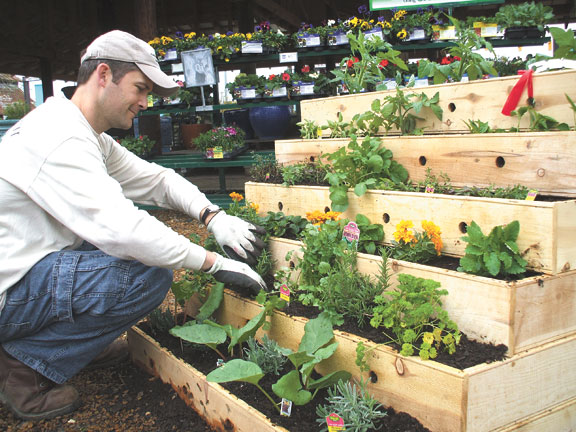Well, I rent and have a balcony. Balconies have a pretty interesting micro-climate. They usually get early or late sun, and shade the rest of the time. They are also pretty dry since rain usually doesn't fall on them.
Tropicals/ Houseplants are a good choice due to their light requirements and portability. You can get some nice colour, and then just bring it in when the temperatures are getting too cool.
Since they don't get rained on, it's BEST to be able to use a rain barrel. Rain is a lil more acidic, it has nary any chemicals, and some ions in it(i guess?). If you can't use rain water, fill a bucket up from the tap and keep a cap off of it for at least 24 hours. This allows any chemicals to burn off. Palms and some Ficus are susceptible to tap-water chemicals. Tap-water is usually pretty alkaline, so you might want to use a acidic-type fertilizer. Speaking of fertilizer, most plants need it only during the growing season. They are more like vitamins, NOT plant food.
An important element to remember in balcony gardening is the small space. To get the most green for your green (dork) is to utilize Vertical Space. The picture above is of a cheap and easy pallet garden. It uses almost no horizontal space. You might be able to even stack them on top of each other and do the entire wall. When planting these, remember to use lower, and bushier ground level types. Or you could try herbs, since you have to cut them back all the time anyway. (Mmmmmm herbs)
Look at all the colour they have here!! These are railing boxes or window boxes. If you get the kind that hang off the outside of your railing you actually Gain space!! Shorter bushier ones look really good here, as well as trailing ones. Combine them together for the best look.
Annuals are best for these types of boxes. In the Midwest our winters will freeze and kill anything in these shallow boxes. Annuals are nice because they usually have all season colour and you can change it up every year! If buying annuals every year is too expensive you could always grow your own from seed. Some annuals are seeded right into the boxes, but if you want earlier colour you'll have to start them indoors or in a cold frame. A warm sunny window or a box with a recycled window. There are many websites out there that show u many different ways to make a cold frame. Pick your price and/or ability level.
Here is the ever-popular hanging basket. These are always so pretty, and they'll make use of the higher areas you can't use. Watch where you hang them if you have taller people. If you hang them outside the hanger of your balcony they will get more sun and rain so keep that in mind.
In my experience they dry and fry out so quickly in the hot afternoon sun. If you must have them out where they get hot sun make sure to mulch or compost the very top of the soil to conserve moisture. Another way they dry out is that the plastic and/or coil (coconut liner) baskets offer no protection for the roots. I've never tried this, but I've seen it done (sort of). Buy your favorite planted basket. Then buy an un-planted hanging basket 1-2 inches Bigger. You might have one at home. Take the bigger basket and add an inch or so worth of (wet) soil/dirt at the bottom. You'll need this dirt on the sides too so it might be easier to put the small basket in to fill up the sides if the wet dirt does not stick. Voila! What the extra basket and dirt does is the outside basket heats up in the sun, keeping the interior one cool. The dirt acts as an insulator against heat and keeps moisture in when you water. PLUS if your pretty flowers come in an ugly basket, here's a useful pretty way to hide it.
These can be expensive, but to cut costs you can always buy the little plants and plant them in your own baskets at home.
These are probably the most popular but there are so many other things you can try.
This is a raised bed type featured in Urban Gardens. Raised gardens are better for people with bad backs, disabilities, and just plain easier. This bed here takes up a 3' x 4' floor space and houses 55 plants!
For veggie lovers there is Square Foot Gardening. This one is small neat spaces creating the biggest yield possible. It takes a bit of planning beforehand. Figure out what you want to grow, and time your crops accordingly. As soon as one plant's yield is achieved it is pulled out and something else is planted. High yield plants are key. If too many of your vegetable wants are to be planted at the same time, check the seed packet for earlier or later starting varieties.
For a few more ideas how to get more plants into less space check out this article. Also check out Urban Gardens.



No comments:
Post a Comment